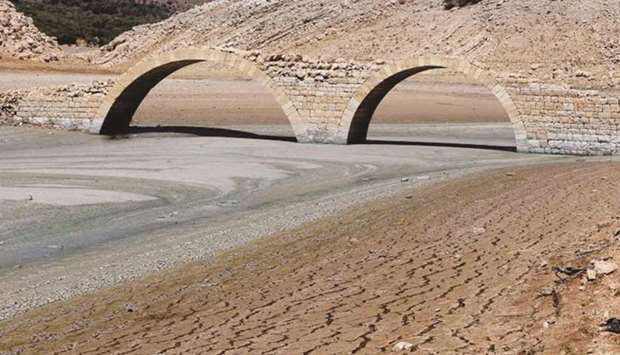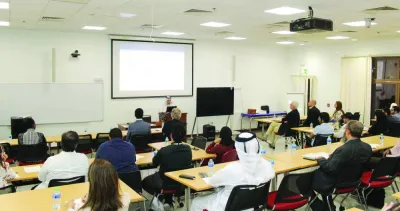The Sustainable Development Goals (SDGs ), agreed by 193 member states of the United Nations in September 2015, is an international strategy for countries of the north and the south alike. Furthermore, a major advance of the SDGs over the previous Millennium Development Goals (MDGs) 2000-2015, is their recognition of the interrelatedness of actions to achieve sustainable development. The 17 goals with their 169 targets for the year 2030 are closely interlinked and require innovative and unconventional policy approaches, such as those focusing on the intersections (meeting points), interlinkages and complex causal relationships, which require multidisciplinary methods for developing implementation strategies to achieve the complex but aspirational agenda.
The three dimensions of sustainable development that the 2030 Agenda outlines (economic prosperity, social justice and environmental protection) are intertwined. Their preliminary scientific analysis concludes that while the 17 SDGs have a clear starting point in one of the three dimensions of sustainable development, most of them embed all three dimensions within their targets. This systems thinking paradigm allows for identifying leverage points for actions that have high impact and for drafting coherent policies that will assist governments to attract the required investments for implementing the 2030 Agenda.
Altogether, the three dimensions set out the framework for the enforcement of universal human rights and human dignity, the rule of law, justice, equality and non discrimination; of respect for race, ethnicity and cultural diversity; and of equal opportunity permitting the full realisation of human potential and contributing to shared prosperity and for a world which is just, equitable, tolerant, open and socially inclusive and in which the needs of the most vulnerable are met.
Much to the dismay of SDGs supporters, in late 2016 and while the ink of signing the Agenda has not dried yet, there was a radical shift of mood among some major international actors towards multilateralism and multilateral institutions. As a consequence, we witnessed in the last three years how the building political pressures of populism and inward nationalism started threatening to push the pursuit of the SDGs noble goals aside.
We started to notice on daily bases how the rule-based multilateral institutions are facing serious threats and how they became under increasing strain at a time when the need for effective multilateral discourse and action arguably is more important than ever. The recent rising powers in some major countries of the North show disregard for the UN and for the world order that gives support to international development assistance and to co-ordinated approaches and solutions to global issues. The focus on bilateralism and ultra-transactional foreign policy, underscore this trend. Their new focus prioritises a world where they care only about their immediate surroundings, not helping humanity at large through partnership and collaboration.
In my opinion, and in spite of such newly emerging isolationist trends, multilateralism is not going to vanish. It may be under threat; it is certainly being undermined, but it is still alive and kicking. I see it working every day, in every resolution the UN adopts. Most importantly, the awaited new international multi-polar order will render a new paradigm for a more equitable world. But let us not forget that with the hard delivery of such transformation there is no doubt that this is a critical moment for the UN and for global co-operation. The UN institutions must sharpen their mandates to focus on their core strengths and optimise their complementarities. Also they need to focus on ways to scale up the impact of innovative approaches with a more systematic recognition of and response to the factors driving or impeding the scaling process.
Let me review for the rest of the article, the Arab region and identify its level of readiness to meet the SDGs and the 2030 Agenda.
In addition to a challenging global ecological context, many Arab countries are confronting the challenge of increased armed violence, fragility, and fragmentation. Implementing the 2030 Agenda and achieving the SDGs in Arab countries cannot be realised in isolation from addressing the many violent conflicts in the region. Because more than ten of the 22 Arab countries are either under occupation or experiencing war or conflict, tens of millions of people are refugees or internally displaced, and many lack basic needs and rights at multiple levels.
This is compounded by the fact that in such contexts, long-term sustainable development objectives have to be addressed while tackling urgent and medium-term priorities that are specific to them. What we need in such situations is to deal simultaneously with three categories of issues: securing quick gains; rebuilding basic functions of the State; and progressing toward sustainable development.
In a broader outlook, we also need to take into consideration that the Arab region is by no means a homogeneous region. Some countries enjoy sustained levels of peace, security, and prosperity. These differentiating conditions are also the reason for the distinctive needs and therefore the disparate priorities for achieving sustainable development goals and the 2030 Agenda in the region. Whereas there is more progress in sub-regions such as the Gulf Co-operation Council countries, there is little progress in the rest of countries of the region.
When it comes to prioritising the 17 items of The SDG agenda and meeting the challenges ahead for countries of the Arab region, there is an utmost need to focus on the water-energy-food nexus. This challenge is of highest importance compared with other challenges for Arab countries. According to the SDG Index and Dashboards Report 2017, food security and sustainable agriculture (SDG 2) and sustainable water management (SDG 6) are high-priority challenges in majority of countries of the region.
In some Arab countries, the water stress level is above 70%, indicating the strong probability of future water scarcity. In a general perspective, the problematic inter-linkages between water (SDG 6), energy (SDG 7) and food security (SDG 2) in the non-oil Arab countries are getting stronger, since population growth causes increasing demands on resources. Therefore, it is crucial for the region to build capabilities in order to be able to adopt an integrated nexus approach in the management of these three vital resources
As a consequence of the above, the biggest challenges facing some of the Arab countries are the targets to reduce undernourishment (SDG 2), and to provide access to drinking water (SDG 6).
Meanwhile, most countries in the region have stagnated or even regressed in regard to environmental goals, which include SDG 13 (Climate Action).
Countries of the region are facing major challenges in decarburising their energy systems to fight climate change, and in conserving marine (SDG 14) and terrestrial (SDG 15) ecosystems.
On the social front, the SDG Index and Dashboard Report indicates that there are several countries of the region facing major challenges in achieving quality education (SDG4). Most countries, as reflected in the international assessments such as PISA and TIMSS, receive low ranking. The overall goal for education (SDG 4) is hard to reach.
Moreover, ensuring gender equality (SDG 5) is illusive. Performing high levels of growth to reduce the spiking levels of unemployment (SDG 8) remains remote for majority of countries. In terms of social inclusiveness, deficits concern income inequality (SDG 10) still severe in non-oil countries.
Regarding trends for sustainable cities (SDG 11), the indicators reflect an increase between 2000 and 2014 from 46 to 61mn people living in slums. The mean level of air pollution (target in SDG 11) was in 2016 more than five times the guideline value defined by the World Health Organisation. This means that nine out of ten people living in urban areas lacked clean air.
For peace and security, (SDG 16), all conflict ridden countries in the region perform poorly across the full range of SDGs owing to instability and conflict.
At the end I should say that the adoption of the 2030 Agenda can be a historic opportunity to promote for systems integrated development thinking among policymakers in countries of the region. Taking into consideration the cross-sectoral linkages across various goals and targets, financing of these partnerships will be challenging as investments made to achieve a given goal influence the approach, resourcing and effectiveness of the delivery of others. It would require strong co-ordination between key funders, including co-financing of partnership initiatives, joint fiduciary frameworks and joint progress reporting.

FILE PHOTO: The dried cracked bed of the Qaraoun artificial lake is seen in West Bekaa. In some Arab countries, the water stress level is above 70%, indicating the strong probability of future water scarcity.


